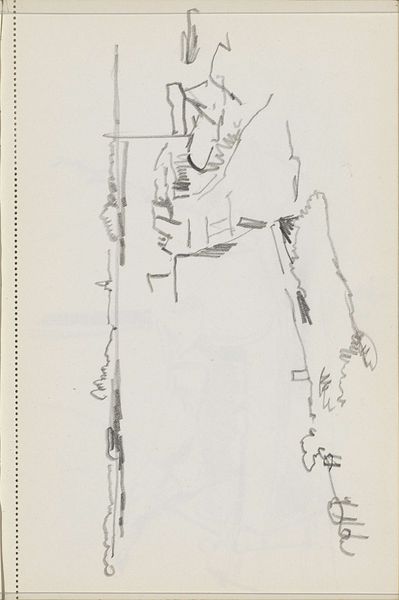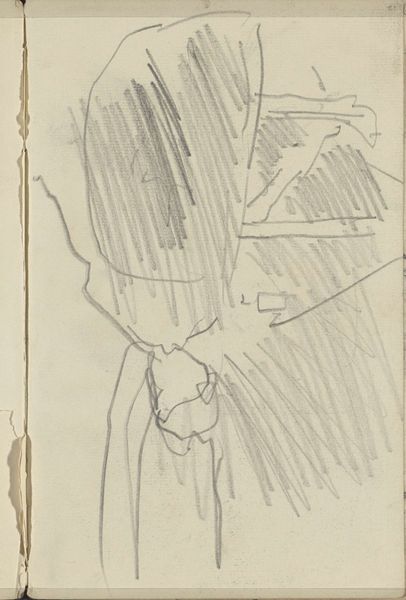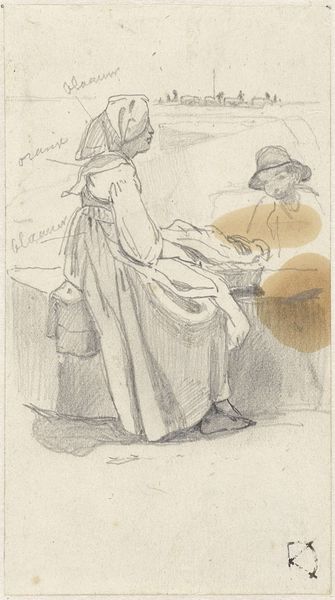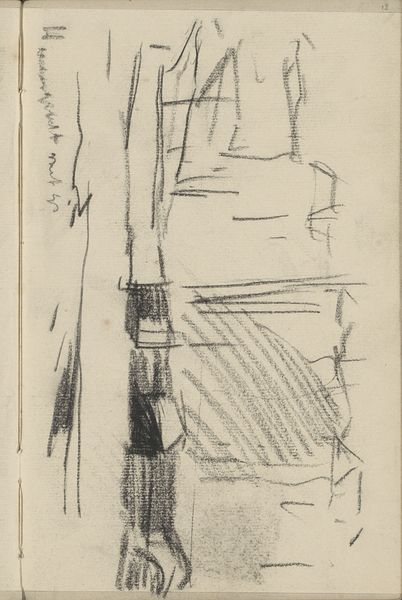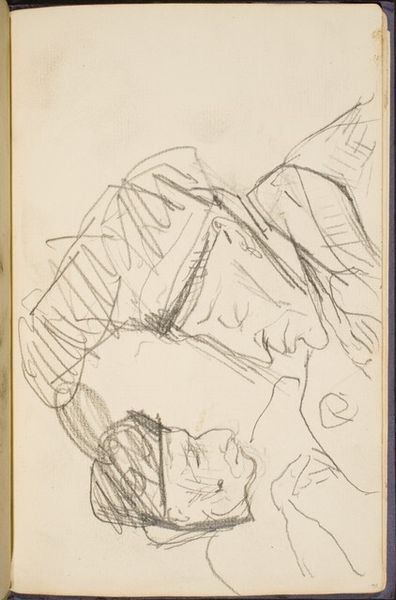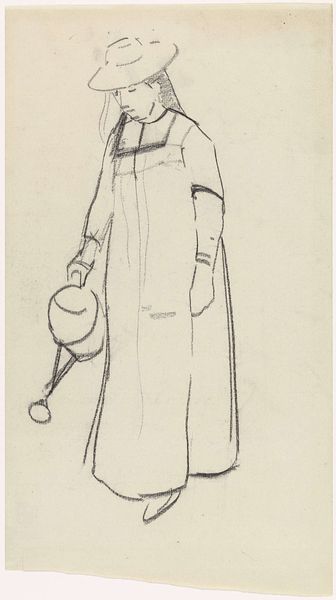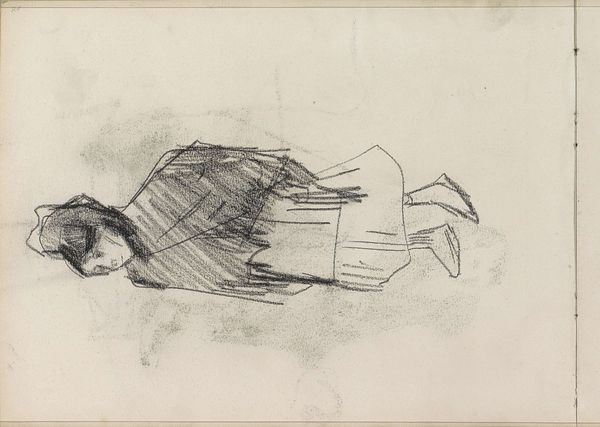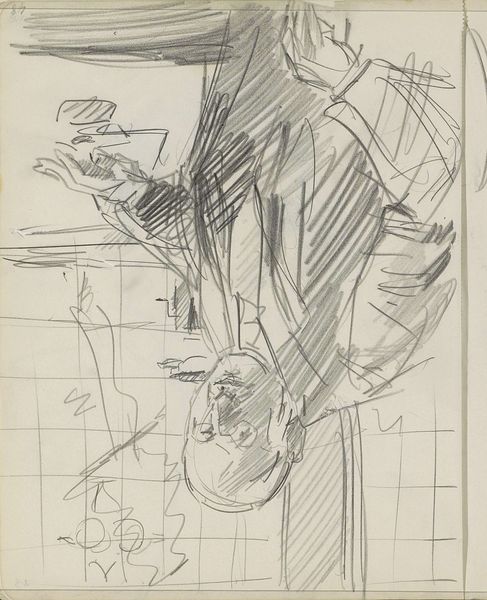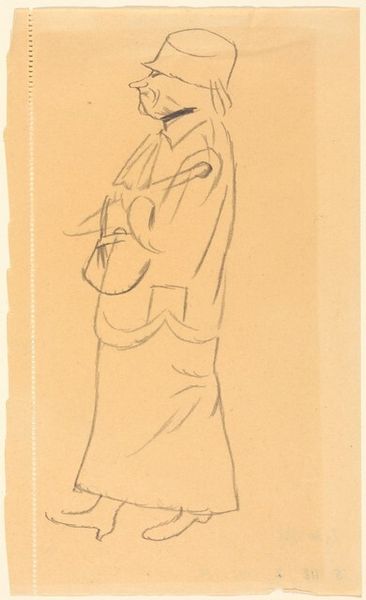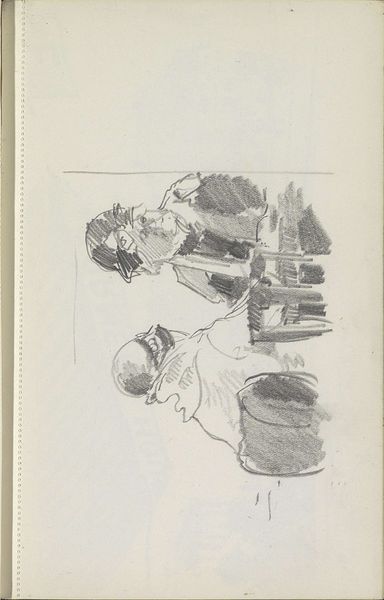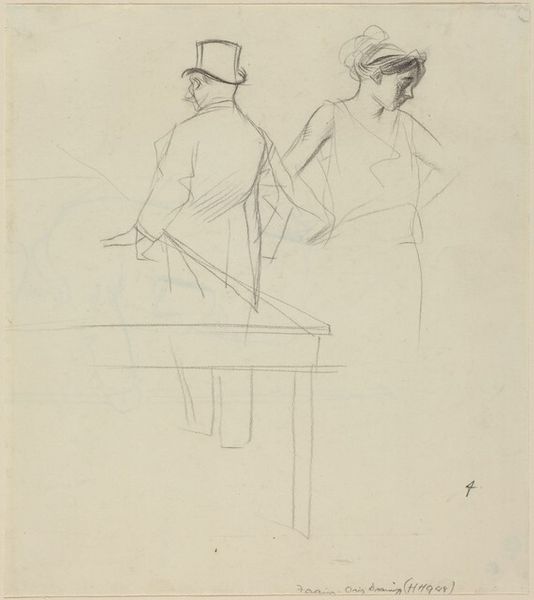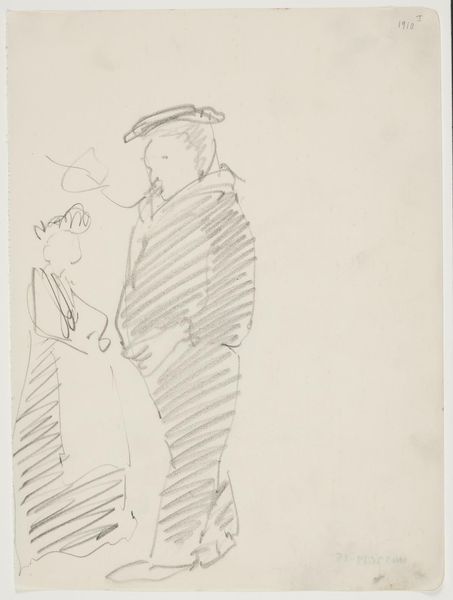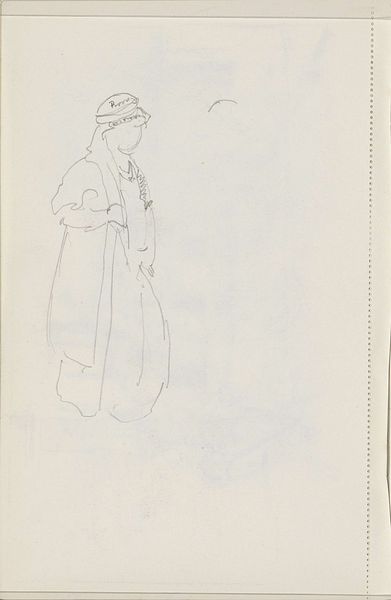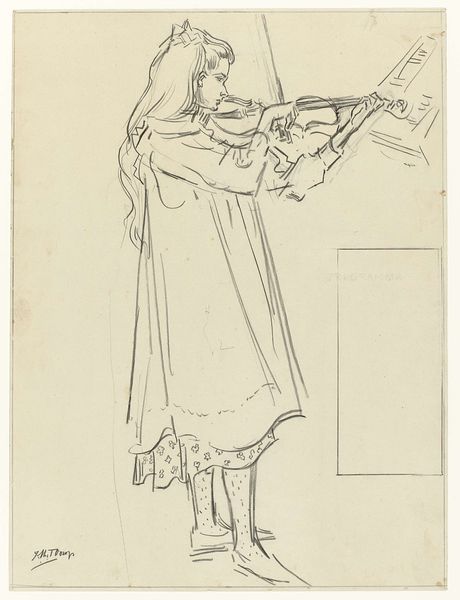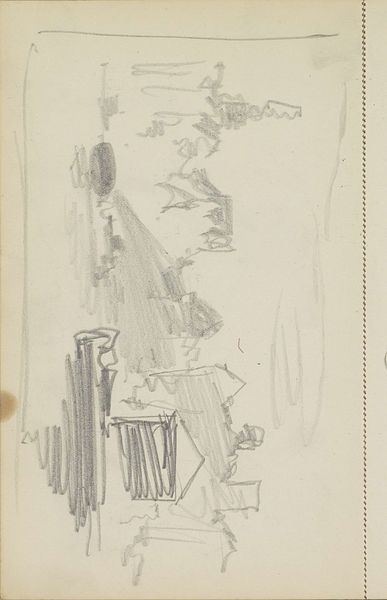
Copyright: National Gallery of Art: CC0 1.0
Curator: André Dunoyer de Segonzac's etching, "At the Bar," completed in 1929, gives us a peek into Parisian nightlife. What strikes you first about it? Editor: There's a weariness, almost a loneliness, to the scene, despite being in a public space. It feels very immediate, captured with only the barest essential lines. Curator: Exactly! Segonzac was interested in the raw reality. Consider the figures themselves – two women in a bar. One assumes the role of bartender, and another looks away to somewhere past us, the viewers. Their apparent social positions ask us to think about labor and consumption, about who is serving and who is being served. Editor: And how are they situated? Note the way the glass bottles on the shelves almost seem to cage them. The etching emphasizes the grid: the tile floor, the ordered glasses. It feels manufactured. Curator: And yet, despite the artifice, there's a feeling of authenticity in depicting their experiences. We can ask ourselves what gender dynamics might have led Segonzac to depicting the women the way he has, both positioned within certain strictures. We're seeing a very real class boundary, too. What kind of bar is it? Is it considered high-class, or something for working people? Editor: Good question. Segonzac made drawings for illustrated magazines in the 20's; this image reminds me of that work, because its style suggests accessibility. An etching like this would likely be produced in multiples. Curator: Making it accessible to more people, absolutely. Editor: I wonder what kind of politics is encoded in this simple image. It presents what might appear to be an everyday subject in an expressive style. However, it prompts consideration about production: where do we sit within that system, and who profits? Curator: It’s fascinating how Segonzac invites that level of scrutiny. The gaze directed away implicates all viewers in considering these dynamics. Editor: Right, art invites inquiry; whether an artwork represents a moment, or serves a larger conversation. Segonzac is presenting more than a surface here. Curator: Agreed, and in understanding this work, we better understand how social context permeates art. Editor: Absolutely.
Comments
No comments
Be the first to comment and join the conversation on the ultimate creative platform.
